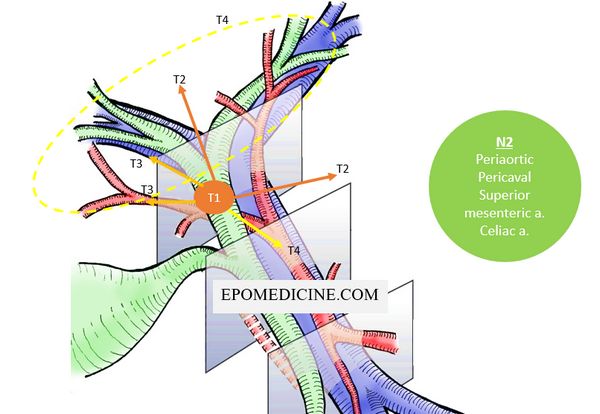This article is in response to the request made by a reader in the comment section. Today, we will try to simplify the biliary tree cancers. Classification of Cholangiocarcinoma Second-order bile ducts act as the separation point between intrahepatic and extrahepatic cholangiocarcinoma. A. Inhtrahepatic – 10 to 20% B. Extrahepatic…
Tag: Pathology
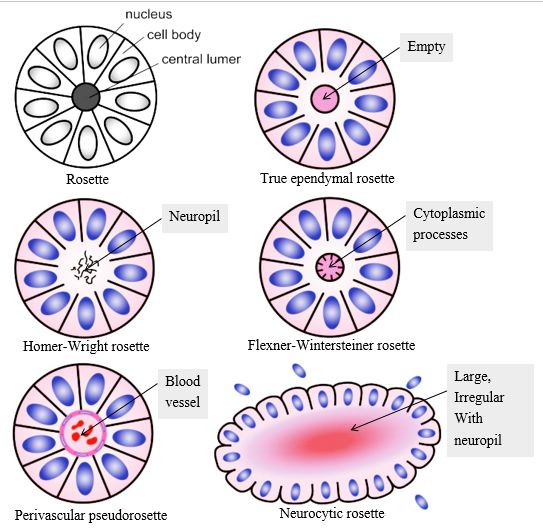
Rosettes in Pathology
Rosette refers to a decoration or pattern resembling a rose. In pathology, rosette refers to aa halo or “spoke-wheel” arrangement of cells around a central structure especially in neoplasms of neuroblastic or neuroectoderma origin. The central structure can be: a. Empty lumen: True ependymal rosette Well differentiated ependymomas (minority of cases)…
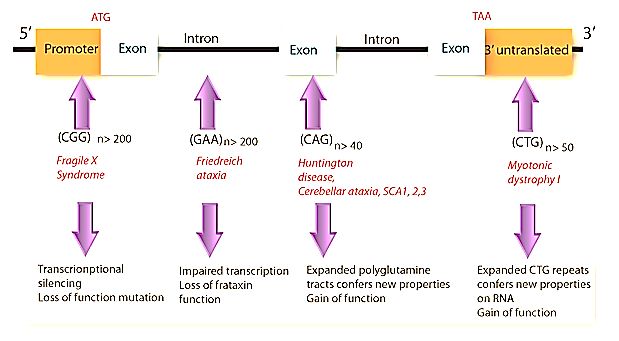
Trinucleotide Repeat Disorders and Anticipation Mnemonics
Anticipation in genetics refers to an increase in severity and decrease in age of onset in successive generations, most likely due to increased size of trinucleotide repeats. Paternal anticipation: Huntington’s disease, Friedreich’s Ataxia Maternal anticipation: Myotonic dystrophy, Fragile X syndrome Diseases Trinucleotide Repeat Affected gene Chromosome Fragile X syndrome CGG…
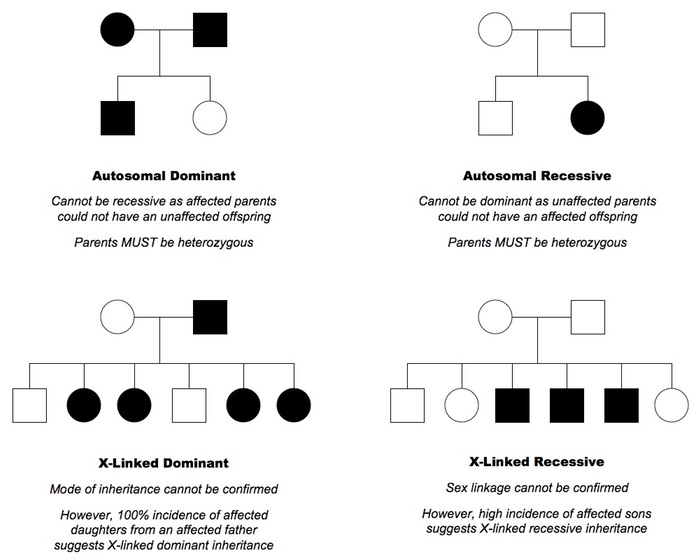
Solving Pedigree Analysis in 3 steps
First: Look for Mitochondrial Inheritance Female transmits disease to all the offsprings (both males and females). Male doesn’t transmit the disease and only the females transmit the disease. If Mitochondrial inheritance is absent, go to second step. Second: Look if the gene is Dominant, Recessive Dominant: Atleast one member in…
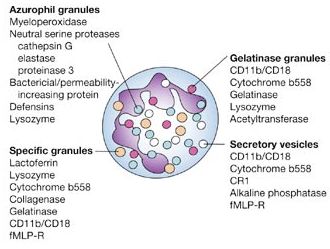
Granular contents of Neutrophils and Platelets
Neutrophil Granules Azurophilic (Primary) Granules These are lysosomes that occur in all granulocytes, as well as in lymphocytes and monocytes. In addition to expected lysosomal hydrolases, they also contain peroxidases (used to demonstrate azurophilic granules chemically). Develop earlier than specific granules. Stains blue/purple by Romanowsky stain. Mnemonic: ABCDE MnOP Acid hydrolase…

Morphology of Granuloma
Concentric layers of Granuloma There are 4 concentric layers in a granuloma, however the clear distinction is difficult in reality due to overlapping. From inside to out: 1. Necrosis Caseating necrosis: Tuberculosis, Leprosy Coagulative necrosis: Buruli ulcer (M.ulcerans), Gumma containing central blood vessels (Syphilis) Fibrinoid necrosis: Aschoff bodies (Rheumatic granuloma),…

Chemokines Mnemonics
Difference between cytokines and chemokines Cytokines are small proteins released by cells, the function of which is “cell-signaling“. Chemokines are small cytokines, which functions as a “chemo-attractant“. Types of Chemokines When you go through the structural classification of chemokines, you come accross various arrangements of letter: C: denotes cysteine X:…
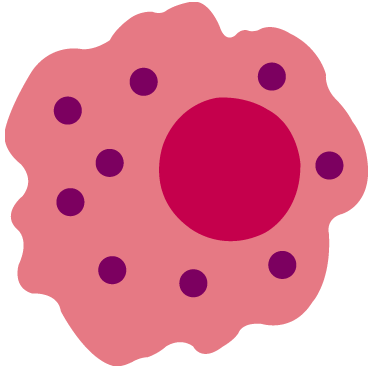
Tissue Specific and Named Macrophages
Subtle differences in the morphology and functions of macrophages develop as a result of the influence of a particular microenvironment. Appearance of macrophages to histologists have been described as a kind of mythological Proteus, “a creature who had the power of changing his appearance at will”. The life-span of these fixed…
